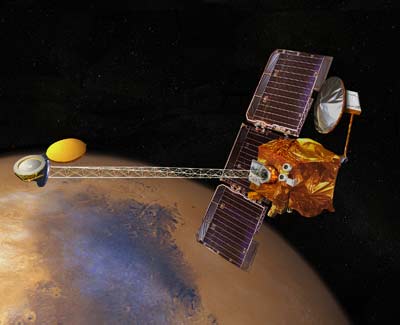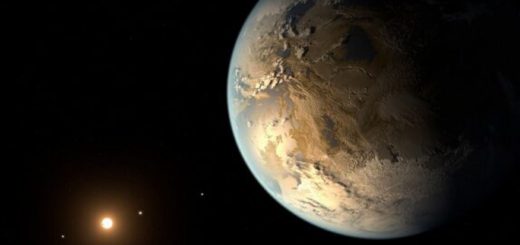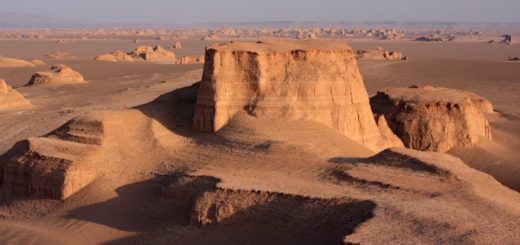How Mars Odyssey Works

The book and movie, “2001: A Space Odyssey,” famously predicted that humans would have made great strides in exploring our solar system by the beginning of the 21st century. By 2001, Mars would have long been achieved, and we would already be flying manned missions to Jupiter. Of course, manned missions to Mars remain a very long-range goal, and Jupiter can only be reached in movies.
Mars Odyssey Image Gallery
However, NASA honored the impact that Arthur C. Clarke’s book and Stanley Kubrick’s movie have had by naming its 2001 mission 2001: Mars Odyssey. The Mars Odyssey spacecraft journeyed for more than six months before placing itself in orbit around the red planet in October, 2001. Its main objective was to scour the planet’s surface to find out what the planet is made of and if there is any water or ice to be found there. There’s still debate about whether water exists or ever existed on Mars. This is an important question, because if water does exist, it means that Mars might harbor life. It would also be very useful to astronauts who may one day go to Mars.
Mars continues to fascinate us, and NASA continues to move forward in its goal of sending a manned mission there within this century. In this article, we will look at this crucial step toward putting a person on Mars. You will learn how the Mars Odyssey spacecraft gets to Mars and how it examines and determines the elemental composition of the planet.
Is there or is there not water on Mars? There have been reports that have backed up both sides of the debate. Here are just a few of the articles written on the subject:
Discovery News: Mars 2008: A Red Planet Odyssey
Space.com: Water Discovery Increase Chances of Martian Life
CNN: Visual evidence suggests water springs on Mars
This type of interplanetary probe is amazing in how it retrieves data and relays that information millions of miles back to Earth.
The Mars Odyssey Orbiter is equipped with three scientific instruments that it uses to explore the Martian surface and atmosphere. Let’s take a look at each of these:
Gamma-ray spectrometer (GRS) – This device measures just how much hydrogen exists in the upper 3 feet of the planet’s soil. The amount of hydrogen found gives scientists some evidence about the existence of water on Mars. (more information on the GRS)
Thermal emissions imaging system (THEMIS) – This instrument identifies rock and mineral types on the planet’s surface and searches for traces of hydrothermal activity. Information gathered from THEMIS helps determine safe landing sites for future missions. (more information on the THEMIS)
Martian radiation environment experiment (MARIE) – Scientists are curious about the amount of radiation humans will be exposed to during a possible manned mission. MARIE gathers data about radiation on the planet. (more information on the MARIE instrument)



 Creators of mankind
Creators of mankind Description of “Tall white aliens”
Description of “Tall white aliens” Where they came from?
Where they came from? About hostile civilizations
About hostile civilizations The war for the Earth
The war for the Earth “Tall white aliens” about eternal life
“Tall white aliens” about eternal life Video: “Nordic aliens”
Video: “Nordic aliens” Aliens
Aliens Alien encounters
Alien encounters The aliens base
The aliens base UFO
UFO Technology UFO
Technology UFO Underground civilization
Underground civilization Ancient alien artifacts
Ancient alien artifacts Military and UFO
Military and UFO Mysteries and hypotheses
Mysteries and hypotheses Scientific facts
Scientific facts


















